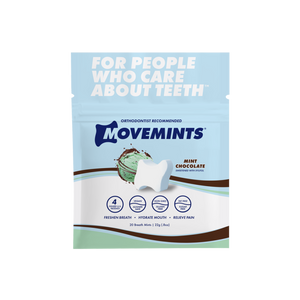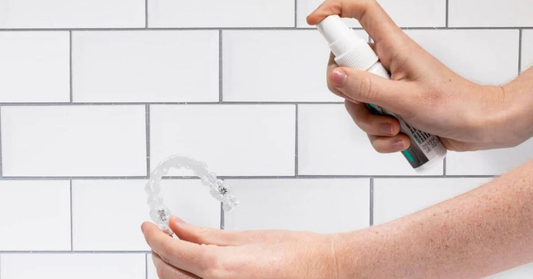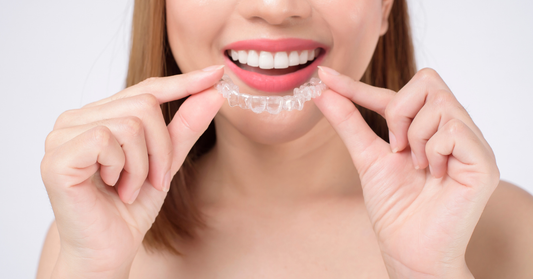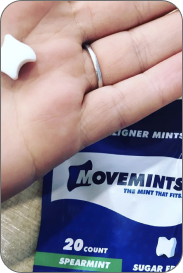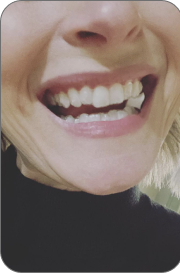Some of you know the feeling: months after completing your treatment, you feel your teeth shifting after Invisalign. Maybe it’s a tight flossing experience, or a peculiar tooth you keep seeing in pictures on social media.
Whatever the signs, they mean the same thing, and you want answers! Here are five considerations for how to stop teeth shifting after Invisalign, and what you can do to get back on track.
- Teeth are set in bone, not stone
- You aren’t wearing your retainer
- Old habits die hard
- What a tight Invisalign retainer is telling you
- Can retainers move teeth back?
Teeth are set in bone, not stone
This is one reason to celebrate, because if it weren’t true, you’d never have gotten straighter teeth in the first place! The gentle pressure that orthodontics uses to move your teeth into new positions takes time, and you don’t see progress overnight.
As your teeth gradually move into their new positions, they must be secured in place by your aligners. That’s one of the main reasons why effective Invisalign treatment requires 22 hours per day of wear time: you can’t keep the gains you’re making if you don’t allow your teeth to settle in their new positions. Fail to meet the 22 hour per day standard wear time, and you increase the risk that your gains will be temporary.
You aren’t wearing your retainer
Another rude awakening for some Invisalign patients is the realization that, after wearing their aligners diligently for their whole journey, they are rewarded with...more aligners. After treatment, we call them clear retainers, but beyond nomenclature they are effectively the same.
Clear retainers are, on average, 30% stronger than your weekly or biweekly trays, and they are designed to prevent your teeth shifting back out of alignment. If you want to retain your gains, so to speak, you should plan on wearing them for as long as you want your new smile to last.
It’s important to pay attention to your doctor’s recommendation. Some Orthodontists will have you wear your retainers all day and night for a period of time (anywhere from 4 weeks to six months) after treatment before transitioning over to a nighttime retainer. This depends on your treatment plan (how drastic the smile transformation; or if notoriously stubborn teeth were fixed), so it’s important to consult your provider when planning your retention strategy.
Old habits die hard
If you had a problem tooth before you started treatment, guess what? It’s still gonna want to cause problems. Teeth moving after Invisalign is why there’s an entire retainer industry emerging alongside Invisalign’s rapid growth, and teeth that need the most rotation during treatment are usually the first ones to move after you’re done.

So if you had a number of these problem teeth, or if your case was moderate to complex correction, the tendency of your teeth to shift back to their old familiar zones will be higher. That means you must be especially diligent about wearing your retainer. This isn’t to say that mild corrections won’t experience relapse if a retainer isn’t worn (they will), but the level of effort required to achieve results is similar to the level of effort you’ll have to expend to keep your teeth from shifting back.
Take note of tight retainers
If you put your retainer in and it feels tighter than usual, this can be a sign of potential relapse. It makes sense, right? If your retainer feels tight, it’s probably because your teeth have been shifting. Time to be honest with yourself: have you been wearing your retainer all night, every night? If not, don’t fret. There are a few things you can do to get yourself back on track.
First things first, get your retainer in earlier, maybe even a few hours before you head to bed. Perform your chewing exercises, focusing on the areas where you feel the most tightness. You can use your chewies for this, or try Movemints to freshen up that stale retainer! This gentle biting routine will ensure that your retainers are properly seated, which is crucial for them to work effectively.
Try this routine for a few weeks and make notes about how your teeth are feeling. If the tightness does not alleviate itself, make sure your retainer hasn’t surpassed it’s useful life. Ask your orthodontist or provider how long your retainer should last, and if it’s beyond the expiration date, you’ll need to get yourself a new retainer.
Patients also ask how long do retainers last. The answer is anywhere from two to five years. If you’re retainer is within it’s useful life, then consider wearing your last set of trays for a week or two. Sometimes this can be enough to get those teeth back into their ideal positions. If none of the above work, you’ll want to put a call in to your provider for a remediation strategy.
Can retainers move teeth back?
The simple answer is no, retainers cannot move teeth back to their prior positions. Retainers are designed to hold your teeth in position after your active orthodontic phase. As such, they don't exert the same force that your aligners do, and therefore can't be relied upon to realign your teeth.
Read More: How Long Do I Have to Wear Retainers?
Furthermore, if you haven't worn your retainers for a period of time and want to use them for realignment, two things will happen. You may in fact move one or more teeth back into position, but then you'll render your retainer useless, as it will no longer serve as a retention device for the position of your new teeth.
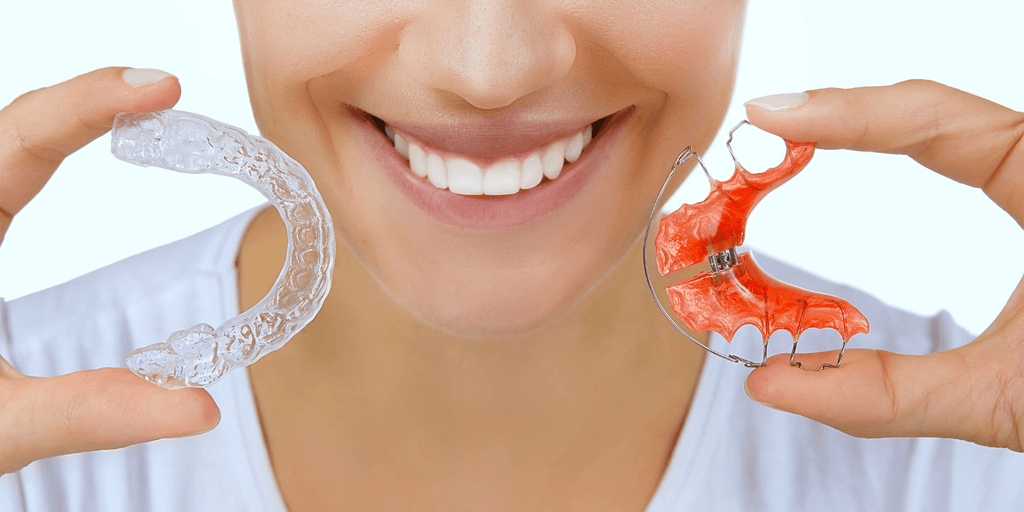
That’s why we recommend you save a few sets of clear aligners from those final stages of your treatment. You can use them as a fix if you experience a small degree of shifting after treatment. However, this should not be done without first consulting with your orthodontic professional. Attempting to straighten your own teeth can cause pain or unwanted shifting.
So there you have it, five things to understand about teeth shifting after Invisalign. You really do have to pay attention to everything your provider says after treatment, and be prepared to wear your retainers for the rest of your life. Or, as long as you want your results to last.
Read More: Help! My Teeth Aren’t Tracking With My Plan.





